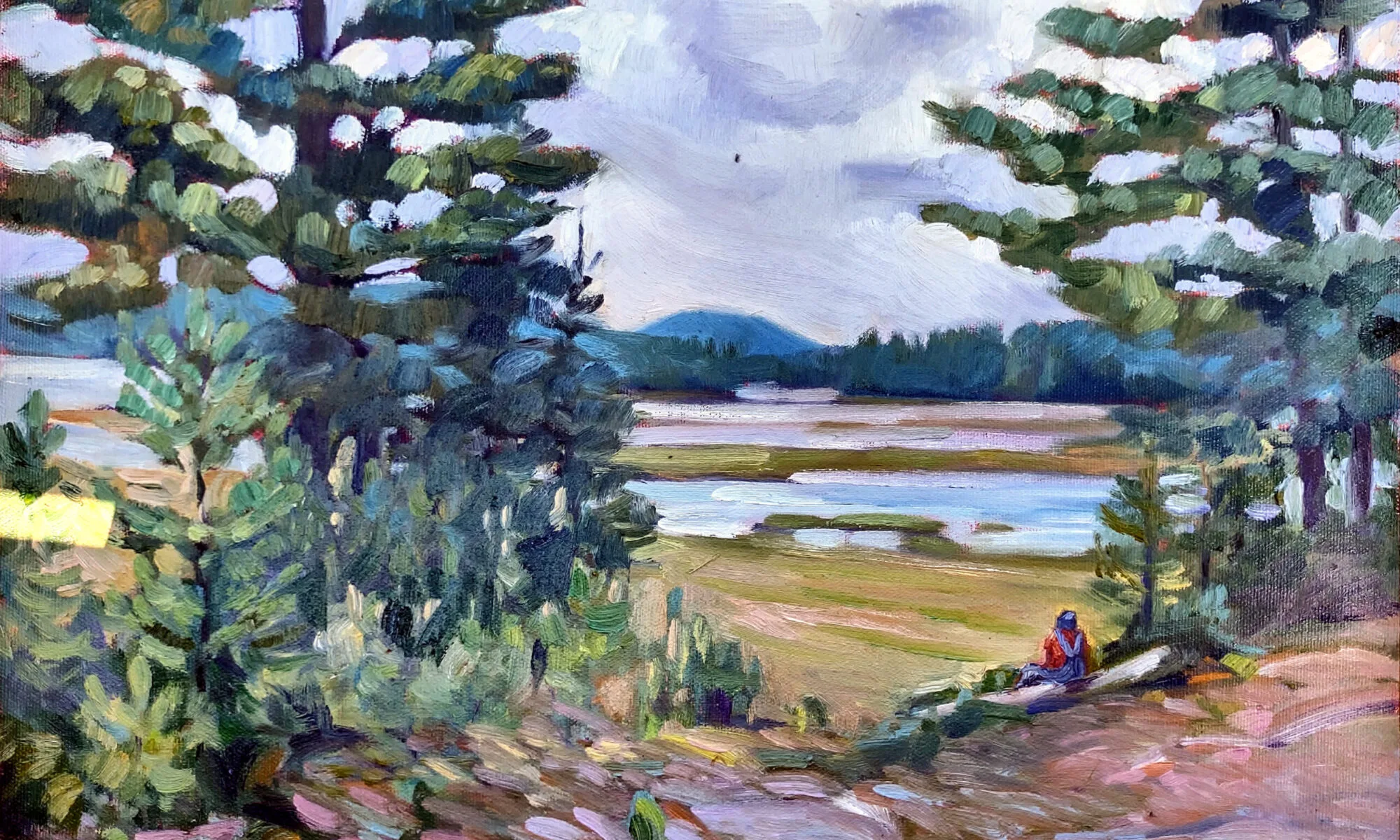Every day, in every way, things are getting better and better.
 |
| The Woodshed, 11×14, oil on birch, by Carol L. Douglas. Ken DeWaard found a cool place to paint; turns out it was right behind my goddaughter’s house. |
Today is my 62nd birthday. I’ve looked forward to this day for a very long time. I qualify to buy a lifetime National Park Pass. I spend a lot of time in the wilds and know this will save me money. Unfortunately, even though our park offices at Acadia are closed right now, there’s a $10 surcharge to buy one on line. I’m a skinflint so I’ll wait.
A birthday is a good time for self-assessment, and I can’t help but compare this to my 42nd birthday. I’d just been through a hellish battle with cancer and was prone to regular bouts of pneumonia. I had it in my head that I was delicate; I probably was. Our kids were ages 11, 11, 7 and 4. They’re fun ages but a tremendous amount of work. Our house looked like it had taken a direct hit in the Blitz. Still, I had great friends, my mother was still alive, and I was happily married (still am, in fact). But much of life at that time was a blur and my biggest memory is being tired.
 |
| I can still sled and skate and snowshoe with my grandkids (all in one day). |
Autonomy is sometimes earned by outliving our responsibilities. Think of Georgia O’Keeffe blooming after she’d buried her philandering husband, Alfred Stieglitz. Not answering to others is a great liberator. I am finally the boss of my own calendar. On Tuesday, I went out to paint. I stayed until my hands froze, unlike Ken DeWaard, who had to leave to drive a child somewhere. My kids are all old enough to drive themselves. In a few years, they’ll be driving me.
My pal Tommy Faulk once asked me my secret to staying married for 40 years. “Just stay married,” I said. It didn’t seem that difficult to me. My husband and I recently completed personality assessments in a class we’re taking together. Turns out we’re mirror images of each other, and I’m sure that helps. Did we start that way, or did time grow us in opposite, compatible directions?
 |
| I’ll celebrate with a brisk walk up Beech Hill. Then maybe I’ll clean my studio. |
One of my husband’s overriding characteristics is tenacity. It goes a long way to explaining why we have a good life today. He is tenacious in his job, his responsibilities, and in his affections. To some degree, it’s a trait we share. Nobody could succeed in the arts without dogged persistence.
“I can’t buy you anything for your birthday,” my daughter Laura complained. “Anything you want, you get for yourself.” That’s true, and it’s another advantage of being 62. On the other hand, I don’t need or want much; in fact, I find clutter irritating. Her sister Mary says, “My mother doesn’t want you to buy her anything. She’d rather you came to her house and threw something away.”
 |
| I have a lovely family, great friends, a beautiful home, work that fascinates… and a truck. What else could I possibly need? |
In a similar vein my friend Barb Whitten offered to bake for my birthday, but I’d already decided to make this ginger cake. I asked her to just help me instead. She shrugged and said sure. At my age, I won’t waste calories on stuff I won’t love.
A year ago, I was packing to leave for Argentina with my pal Jane Chapin, a trip that blew up because of COVID. The past year has been, er, abnormal. But this is the life we’ve been given, and I wouldn’t trade it for anything. “May you live in interesting times” may be intended as a curse, but I consider it a blessing.






























